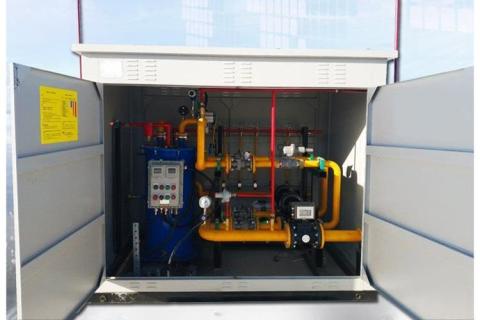
News
As global temperatures soar, energy infrastructure faces unprecedented challenges. Gas skid systems—pre-engineered, modular units for gas processing and distribution—are proving indispensable in hot climates. Recent deployments in Saudi Arabia’s 50°C desert environments and Australia’s Outback demonstrate how these systems outperform traditional setups. Equipped with AI-driven thermal regulation and corrosion-resistant materials, modern gas skids reduce downtime by 40% while maintaining operational stability, according to a 2023 DNV GL industry report.
The technological iteration of energy modules is also rapid. The gas pressure regulating skid has added hydrogen energy adaptation functions, and its ceramic composite material valve core can withstand a hydrogen concentration environment of 70%, helping a hydrogen energy park achieve equipment reuse and transformation. The skid-mounted LNG module has introduced a low-temperature latent heat recovery system, reducing BOG treatment energy consumption by 54% and promoting the industry's progress towards zero-emission goals.
Against the backdrop of the accelerated intelligent upgrade of the global manufacturing industry, the matrix of modular equipment led by skid modules is triggering a new round of industrial revolution. Recently, the standardized module series displayed at an international industrial equipment exhibition, with its breakthrough integrated design concept, has provided a new paradigm for equipment upgrades in fields such as petrochemicals and energy power.
For manufacturers like Shanghai Shenqi Machinery Equipment Co., Ltd., excellence in plant and office management is not optional—it is a strategic imperative. By fostering efficiency, safety, innovation, and collaboration across both domains, companies can achieve operational resilience, adapt to market shifts, and sustain long-term growth. In an era where industries demand agility and reliability, mastering these management pillars positions businesses as leaders in their fields.
Shanghai, China – Shanghai Shenqi Machinery Equipment Co., Ltd., a leading manufacturer specializing in gas pressure regulating skids, prefabricated pipelines, and skid modules, has announced the successful relocation of its operations to a state-of-the-art production facility. The move, which includes significant investments in advanced machinery and expanded production lines, underscores the company’s commitment to meeting growing global demand for its innovative energy infrastructure solutions.
In the dynamic fields of energy, petrochemical, power generation, and mechanical engineering, piping systems serve as the lifeblood of industrial processes. As a leading provider of piping solutions, our company specializes in delivering end-to-end services—from workshop fabrication to on-site installation—tailored to meet the rigorous demands of high-pressure pipeline systems.
In modern industrial applications, modular skid-mounted equipment has become a game-changer, revolutionizing how industries approach process optimization, cost management, and project execution. Below, we explore the critical advantages of skid-mounted systems and their growing importance in global engineering projects.
Liquefied Natural Gas (LNG) has emerged as a clean, efficient, and versatile energy source for industries and transportation sectors. For LNG fueling stations, proper pre-cooling and systematic operational procedures are critical to ensure safety, efficiency, and compliance with international standards. This article outlines the detailed LNG refueling process, focusing on skid-mounted equipment setup, pre-cooling steps, and valve management protocols. Whether you’re a technician, plant operator, or fleet manager, understanding these steps will help optimize operations and minimize risks.
In the realm of industrial gas processing and energy management, cryogenic pump skids play a pivotal role in transforming stored liquids into high-pressure gases for diverse applications. These systems are engineered to enhance efficiency and safety in handling cryogenic fluids, such as liquefied natural gas (LNG) or other low-temperature liquids.
In a significant stride toward advancing global chemical processing infrastructure, [Your Company Name] has successfully delivered a cutting-edge modular chemical pump skid system to international clients, marking a milestone in engineering excellence and operational reliability. Designed to meet stringent international standards, this skid-mounted solution exemplifies innovation, adaptability, and resilience in addressing complex industrial challenges.










